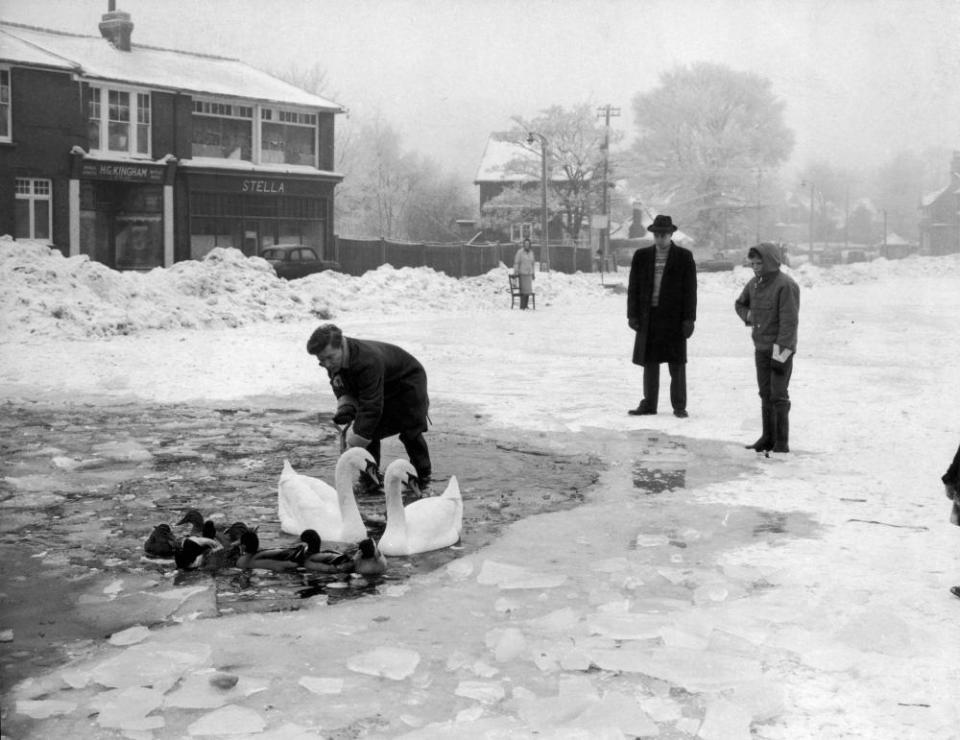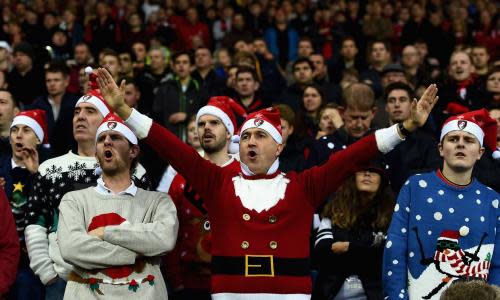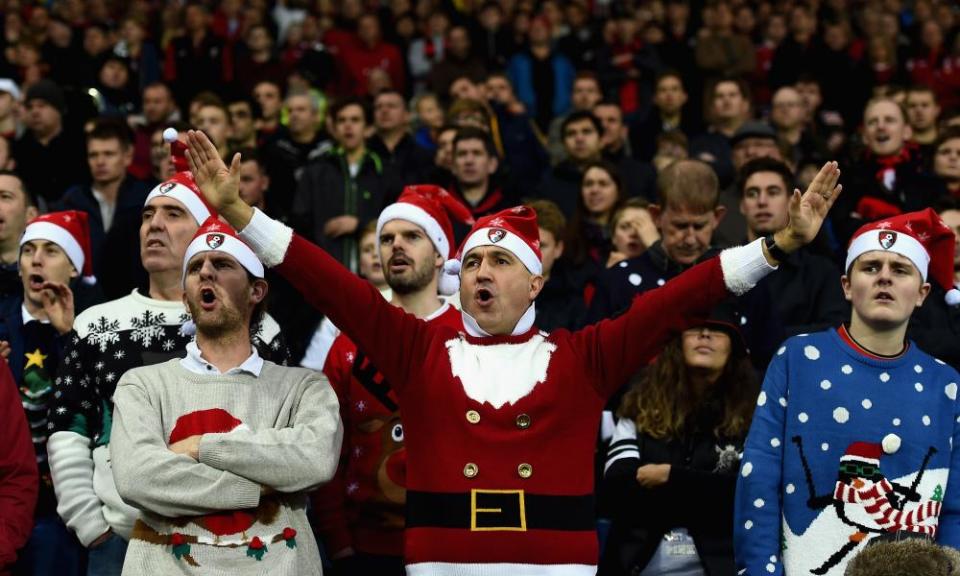What is the longest Boxing Day away trip a football team has made?
“What is the longest Boxing Day away trip a team has had to make?” enquires David Gregson.
Let’s begin with a look at this year’s festive journeys (all the below are via the AA Route Planner, rather than as the crow flies). The longest trip on offer in the top flight will be taken by Rafa Benítez’s Newcastle, who must journey 174 miles to Anfield – four miles further than Cardiff’s away-day at Crystal Palace. The furthest trip in the country, meanwhile is Plymouth’s 211-mile trek to AFC Wimbledon.
IN PICTURES: The worst artist impersonations of footballers
READ MORE: Ranked! The 10 best Premier League signings in 2018/19 so far
READ MORE: Every current club’s greatest ever Premier League win
In Italy, bravo to any Napoli fans committed enough to make the 491-mile journey to see their side face Inter at San Siro – and likewise to any Genoa diehards following their side to Cagliari. That trip is just 477 miles, but 190 of them will be on a ferry ploughing across the Tyrrhenian Sea.
As for what the record books say – well, you probably won’t find this in a record book, but hey – the longest Boxing Day journey of the Premier League era appears to belong to West Ham, who travelled 229 miles to play Swansea City in 2016 (and were duly rewarded with a 4-1 win). In terms of overall top-flight history, Chelsea did one better in every sense back in 1963, journeying 248 miles to play Blackpool, and winning 5-1.
There have been longer English trips in other leagues, mind. “In 1991 Hull City hosted Bournemouth, a distance of 277 miles,” writes James McVie. “And the Tigers had the joy of a New Year’s Day trip to Exeter in 1994, all of 299 miles. Very fan-friendly.” Via Twitter, @TheCumbriansNet points out a couple of epic trips involving Carlisle: Watford made a 292-mile slog there for a Division Three date in 1962, all for the pleasure of a 2-1 defeat, while in 1990 the Cumbrians voyaged 298 miles to play Cardiff City in Division Four – and lost 3-1.
And here’s Bobby Dunnett with another: “Swindon Town were stripped of promotion to the First Division in 1990 and Sunderland replaced them, also taking over their fixtures. This included a Boxing Day match away at Crystal Palace, with a 12pm kick-off.” Just the 303 miles. “It was a miserable morning, and I remember a group of Sunderland fans, soaking wet and obviously without a coat between them, being given a warm welcome in the usually members’ only Crystals bar at Selhurst Park. Sunderland were near the bottom of the league, while Palace were, incredibly, challenging for the title, and after taking a surprise lead, the Sunderland fans had to spend the journey home reflecting on conceding two late goals and losing 2-1. As for Palace, we went on to finish third!”
“What’s the highest points gap held at Christmas by a team who failed to win the league?” tweets @_KunleAjao.
Newcastle’s frittering of their mid-season lead in the 1995-96 season is, of course, what first springs to mind here. Kevin Keegan’s side were 10 points clear on Christmas Day – a lead that lead stretched to 12 points in mid-January (albeit with more games played). And we all know how that one turned out.
And as far as the English top flight goes, that’s as good as it gets – although, back in the two-points-for-a-win days, Manchester United themselves were four points clear when they were tucking into their Christmas pudding in 1971, only to finish the season way down in eighth. A grim season all round for Manchester clubs, as it was the same year that City, five points clear in mid-January, ended up finishing fourth in a one-horse race.
A decade later, the First Division table made for especially odd reading on Christmas Day 1981-82 – newly-promoted Swansea were top, while eventual champions Liverpool were down in 12th.
Knowledge archive
“Do you know which club opened its ground for ice skating because the pitch was frozen?” asked Kim Vanderhoven in 2002.
The year was 1962-63, and England and Wales were experiencing their coldest winter since 1740 (Scotland, incidentally, was suffering its worst since 1829). From Boxing Day 1962 to early March 1963, most of the British Isles was under snow, with average temperatures five-to-seven degrees below average. Not surprisingly, hardly any football was played.

Indeed, the winter was so severe that Barnsley only managed two games from 21 December 1962 to 12 March 1963. Meanwhile, up the road in Halifax, they hit upon an enterprising idea: why not use the Shay stadium for ice-skating?
Ironically, it happened on 2 March 1963 when – as the Manchester Guardian booklet “The Long Winter 1962-63” reports – most of the country was, at long last, experiencing a thaw:
Troops relieved a farm on Dartmoor which had been cut off by 20ft snow drifts for 66 days. With only 14 Football League matches postponed, soccer had its best day for eleven weeks. There was still no football at Halifax, but the local club opened its ground as a public ice rink and hundreds skated on it.
The stunt pulled in a few pennies, but it didn’t do Halifax any good – they scraped just 30 points all season and were relegated to the Fourth Division, along with Carlisle, Brighton and Bradford Park Avenue.
• For thousands more questions and answers look through our archive.
Can you help?
“When a manager gets fired, or a player switches teams … what happens to all of their former club clothes and other gear?” asks Ned Harper.
“What is the earliest that a match has been abandoned due to the weather?” wonders Stephen McRae.
@TheKnowledge_GU managed to get myself into a Wikipedia rabbit hole... And have found out that Michal Kovar scored 4 penalties in Sigma Olomoic's 8-0 drubbing of Velbazhd Kyustendil in the 2000 Intertoto Cup..... Was wondering whether anyone has scored more penalties in a game?
— Jamie Vickery (@JVickeryUK) December 14, 2018
So Joe Corona plays for América (on loan from Tijuana) and América are sponsored by Corona, so his shirt says Corona Corona. This in itself is nice, but are there other examples of players playing for a team where they share a name with the sponsor?
— Alex Stewart (@AFHStewart) December 12, 2018
“In Ireland as I’m sure you know, we have two associations, each with their own league structure, IFA in the North and FAI in the South,” writes Adam M. “Derry City play in the League of Ireland and the share the Brandywell Stadium with Institute, who play in the NIFL Premiership. Are there any other instances of two clubs who compete in different associations sharing the same stadium?”
Email your questions and answers to knowledge@theguardian.com or tweet @TheKnowledge_GU. As ever, thanks for all your questions and answers over the past year. The Knowledge is taking a festive break but will be back on Wednesday 2 January.

 Yahoo Sport
Yahoo Sport 













































